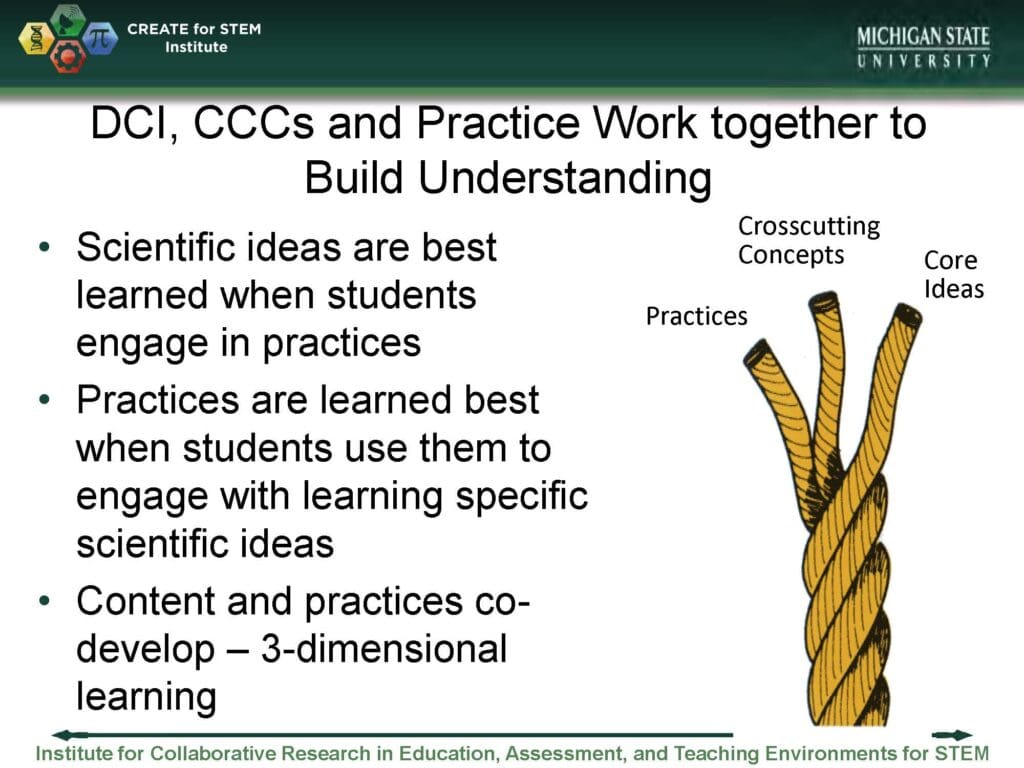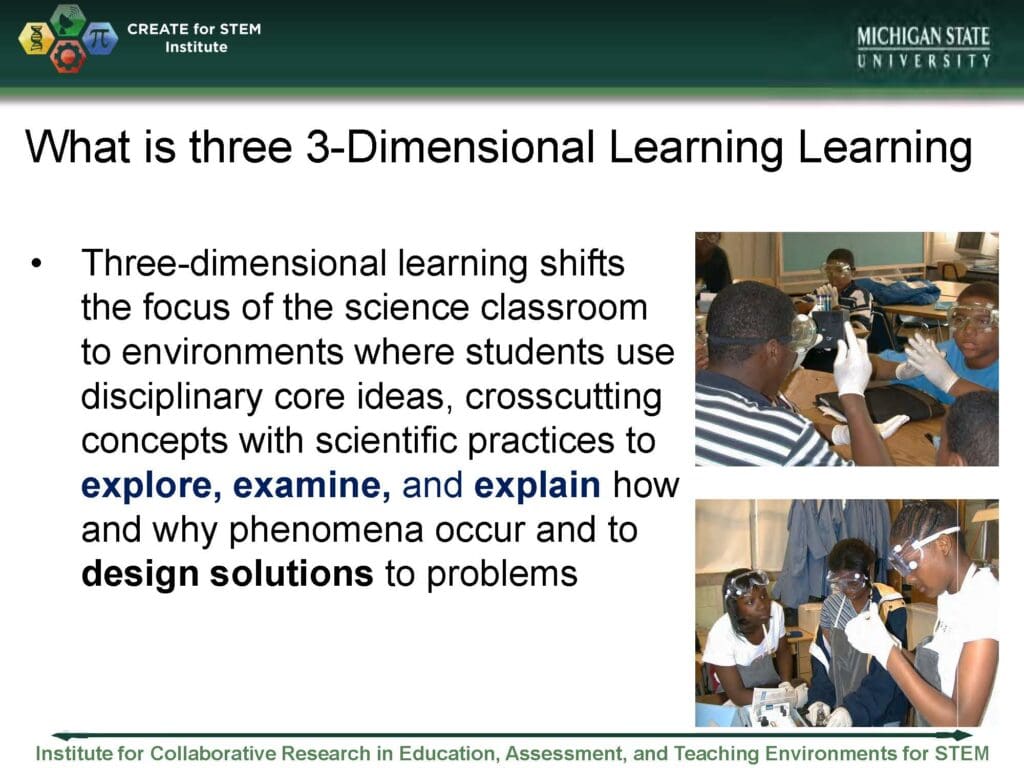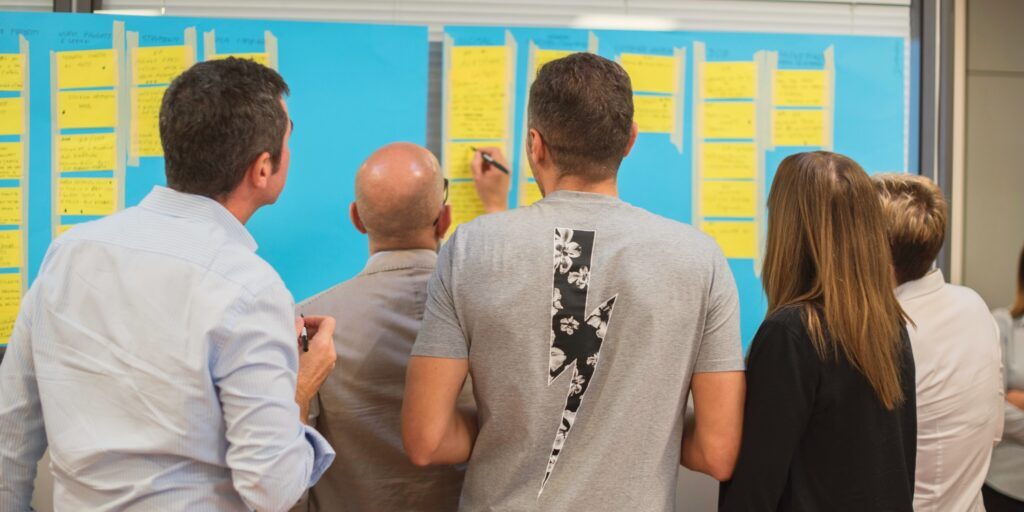What is Three-Dimensional Learning?

Three-Dimensional Learning shifts the focus of the science classroom to environments where students use disciplinary core ideas, crosscutting concepts with scientific practices to explore, examine, and explain how and why phenomena occur and to design solutions to problems.
Joe Krajcik, one of the developers of the A Framework for K–12 Science Education, Next Generation Science Standards, and IQWST, has presented around the country on what makes teaching with Three-Dimensional Learning different.
Hear directly from Joe Krajcik, PhD, and download his professional learning presentations for science educators to learn more about three-dimensional learning.

Three-Dimensional Learning Professional Learning Presentations
Here is an overview presentation, along with examples from different grades and topics:
Three-Dimensional Learning Overview Presentation
Three-Dimensional Learning in Earth Science – Grade 6 Professional Learning Presentation
Three-Dimensional Learning in Biology – Grade 7 Professional Learning Presentation
Three-Dimensional Learning in Chemistry – Grade 7 Professional Learning Presentation



What is Three-Dimensional Learning?
“Perhaps the most significant shift in the Framework for K – 12 Science Education and NGSS is that students need to makes sense of phenomena or design solutions for problems by scientific and engineering practices, disciplinary core ideas and crosscutting concepts working together. The working together of the three dimensions to make sense of phenomena and design solution to problems is referred to as 3-dimensional learning.
It represents an entirely new way of thinking about and enacting science teaching. Don’t think of the practices and crosscutting concepts in service of helping students understand the disciplinary core ideas. Rather, the three work together to help students make sense of phenomena or design solutions. Making sense of phenomena and designing solutions drives the teaching and learning process. When I taught high school chemistry I use to try my best to help students to learn important science concepts. Inquiry was always a service to help learn the content.
But the Framework and NGSS, based upon the research literature, clearly point out that you cannot learn scientific content (core ideas and crosscutting concepts) separate from engaging in the practice. Another way of expressing this is that learners best build a deeper understanding of scientific content when engaged in practices, and practices are learned best when used with scientific ideas. We learn content by engaging in practices and we learn to practice by using science content to make sense of phenomena or design solutions to the problems.
Three-Dimensional Learning should seem different to you, as it does to me. My understanding of three-dimensional learning has grown tremendously since I first started working on the Framework and on the NGSS. The NGSS and three-dimensional learning should seem different and in many respects, it should seem revolutionary.
The NGSS is structured differently from how we taught in the past and it should and will change what happens in science classrooms. Three-dimensional learning shifts the focus of the science classrooms to environments where students use disciplinary core ideas, crosscutting concepts with scientific practices to explore, examine, and explain how and why phenomena occur and to design solutions to problems.”
Additional Resources:
• NGSS: Overview of 3 Dimensions
• NRC Framework describes “Integrating the Three Dimensions”
• NSTA Blog: “How to Select and Design Materials that Align to the Next Generation Science Standards”
* * * * * *




